by Steve Sharp
Sandan
Mokuso is the Japanese translation of the original Indian word Moksha and the Chinese rendering Mazhao. If you look at the Kanji the Japanese use for Mokuso and the Chinese use for Mazhao you will notice that the first kanji has the same meaning, Silent, but the second kanji differs in that the Japanese use a kanji meaning, Thought, or, Image, whereas the Chinese use the kanji which means, Illumination.
I think the Chinese rendering of the second kanji makes more sense in its direct relationship with a well established form of meditation called "Silent Illumination" originating in India, developed in China and brought to the West via Japan by a teacher called Dogen Zenji from the Soto branch of Zen.
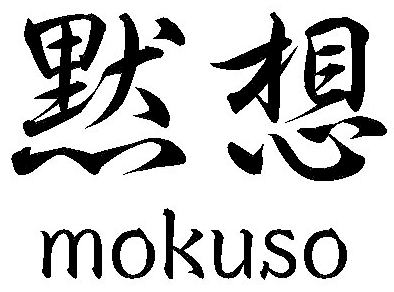
The Martial Arts in China and Budo in Japan have been heavily influenced by the meditation traditions drawn from Buddhist, Daoist philosophy and practice starting with the Indian monk called Bodhidharma who was renowned in bringing the foundations of Zen Meditation and introducing its practice to the Shaolin Monks to improve their health and enhance the practice of their Martial Art.

Zazen which means seated meditation and Mokuso/Mazhao Silent Illumination.
The picture below shows a Monk sitting in Full Lotus position with hands in the Meditation Mudra called in Japanese Zenjo-in or Hokkaijo-in. The totality of the seated position with all things in place which I will explain is called Maha Mudra(The Great Seal).This position is called the great seal because the combination of the various gestures and body position create a powerful energetic and effective means for the practice of Silence and Illumination in seated meditation and beyond.
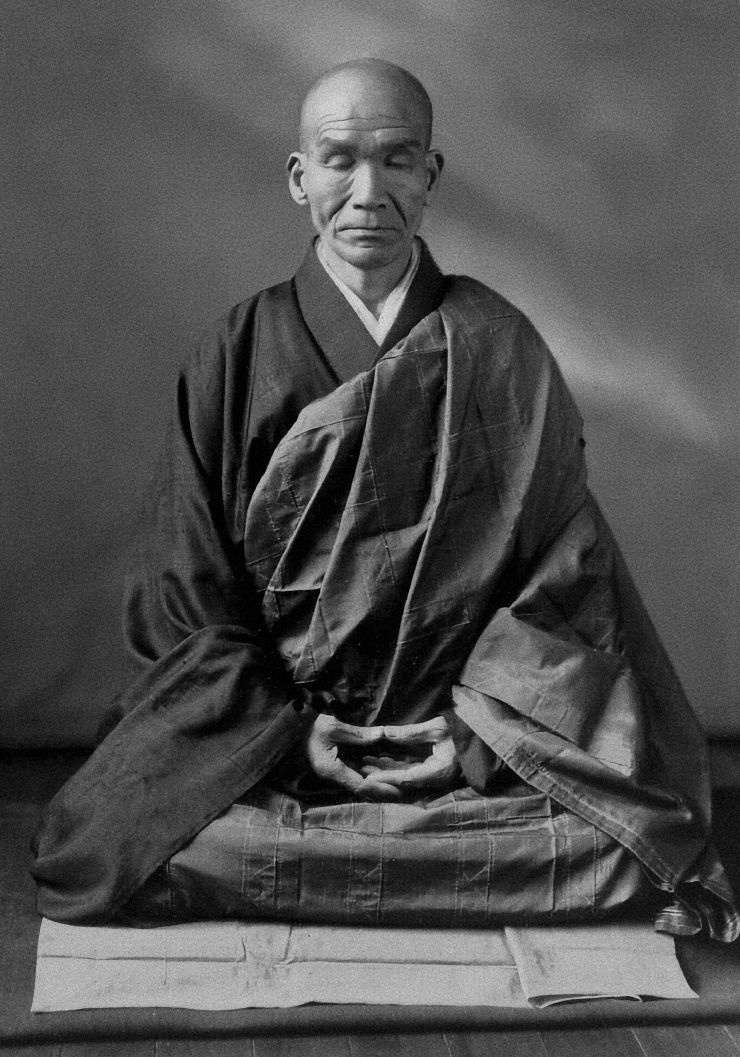
Before I talk about the details regarding the correct form in the body in seated meditation I want to frame this discussion in what in Buddhist terminology is called the Four Foundations of Mindfulness or Awareness as I prefer to call it.
The Four are…
Mindfulness/Awareness of Body in Body
- The correct body position listed in this article.
- The correct way to focus on the breath.
- We would then explore the above in other positions and movement.
Mindfulness/Awareness of Feelings in Feelings
- This involves the important recognition of feelings as either..
- Pleasant,Painful or Neutral(neither painful nor pleasant feelings).
- Also important is to recognise the constantly changing nature of the above feelings.
Mindfulness/Awareness of Mind in Mind
- Recognition of the constant stream of thoughts and their proliferation into thinking and the effect on feeling and sensation in body mind and breath whether positive or negative and their constantly changing.
Mindfulness/Awareness of Mind Objects in Mind Objects
- To recognise distraction and doubt as hindrances to practice and for our purposes we will focus in what the Buddhists call the five aggregates.
- Material form,Sensation,Perception,Thou
ght Proliferation and Consciousness.
All the above can be worked through over time within your Meditation practice. It’s also important to realise that although it’s a lengthy process to write about the practice of these elements is recognised instantaneously which is the Illumination aspect of Silence. During this practice our awareness builds from the most gross sensations of body to the more subtle vibrations of mind and consciousness.
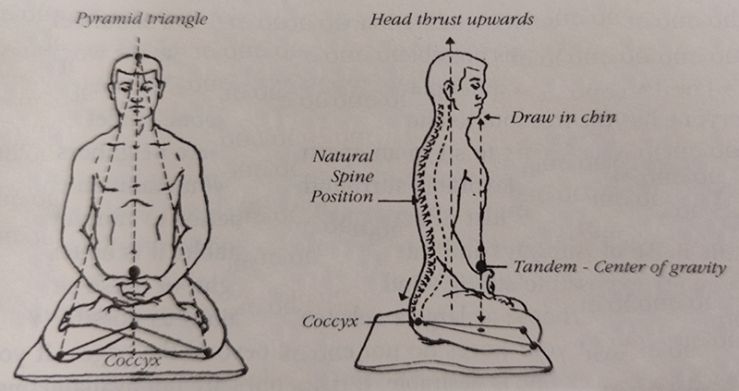

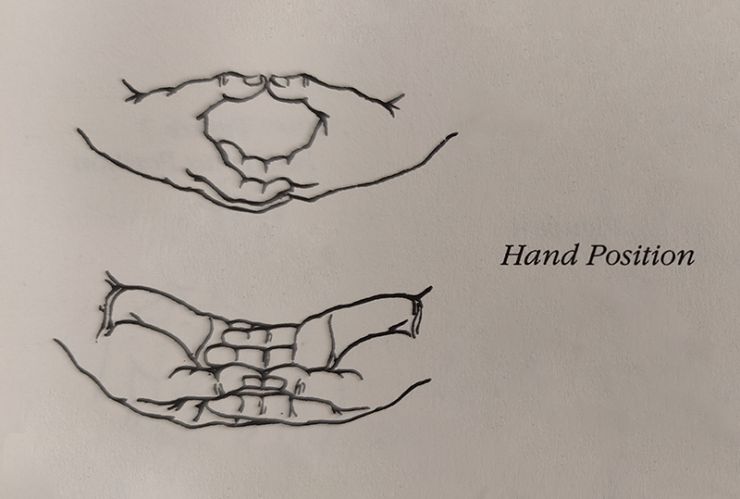

The Body
Looking at the diagram from the front notice the structural balance of support via the pyramid with a strong supported and grounded base via the pelvis narrowing at the top via energetic suspension of the head with the Tanden as center.
Looking from the side you will see the natural curves of the spine with the knees being lower than the pelvis which creates the natural curve in the lumbar/Lower spine specifically and with it the balance of the total spine itself.
The chest softens and drops slightly which raises and widens the back and ribs releases the diaphragm and allows the shoulders and elbows to drop and with the hands in the meditation Mudra allow also space under the armpit for enhanced breathing.The softening and widening of the back allow the chin to gently draw back at the same time as the neck lengthens and the skull lifts.
With all these bodily adjustments in place we have a strong and balanced horizontal base through the pelvis and shoulder girdle to support the vertical spine which structurally give us a good starting point for focused meditation.
Energetically there are one or two things worth pointing out
There is a reason for the name Maha Mudra or Great Seal.Basically the body in both structure and potential loss of energy through leakage is prevented through the various gestures and seals.The basic physical structure we have already discussed.
Energetically the legs are sealed via the lotus position.The arms are sealed via the meditation hand Mudra.The spine is sealed via a slight contraction and lift of the perineum(pelvic floor) in combination with the tongue resting on the top palate.
The eyes are sealed by being half closed and looking about three feet in front of you.
The hand Mudra itself also is a seal in that you maintain the circular shape with thumbs touching but not touching.(It’s also worth noting that the position of the hands will be touching the abdomen at the Tanden which also relates to the movement felt in the abdomen in breathing).
Although the lotus position is traditionally seen as the most effective base of support there are other positions of the legs you can choose from below which best allows you to create a balanced horizontal base to support your vertical spine.See diagrams below.

A note on breathing
There is Buddhist and Daoist breathing methods. The Buddhist method is more passive and Daoist more dynamic.
- Buddhist method: Breath in abdomen expands and out contracts.
- Daoist method: Breath in abdomen contracts and out expands.
For our purposes we will focus on a more natural way of breathing which is more attuned to the Buddhist method.
If you are going to sit in any of the crossed legged positions you will probably need the support of a cushion to create the correct base and leg position(knees lower than pelvis) to support the vertical spine.
A case for Seiza
I believe there is a strong case for sitting in Seiza in our practice of Mokuso/Mazhao our short meditation session in Aikido.
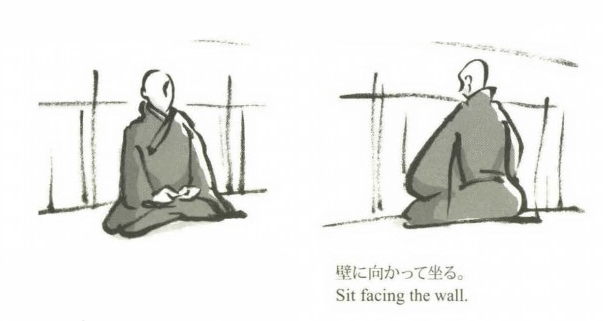

The Seiza position allows in and of itself a correct position of the pelvis and the creation of the natural curvature of the lumbar/lower spine and with it the balance of the other curves of the spine too with correct placement of the head.The shoulder girdle is balanced with hand Mudra nicely resting in front of the Tanden.
There are other practice reasons to do Seiza.We already line up to bow to the Shomen and Sensei so already settled and in position and Seiza is an apt position for our martial readiness to respond in movement quickly unlike moving from a crossed legged position.
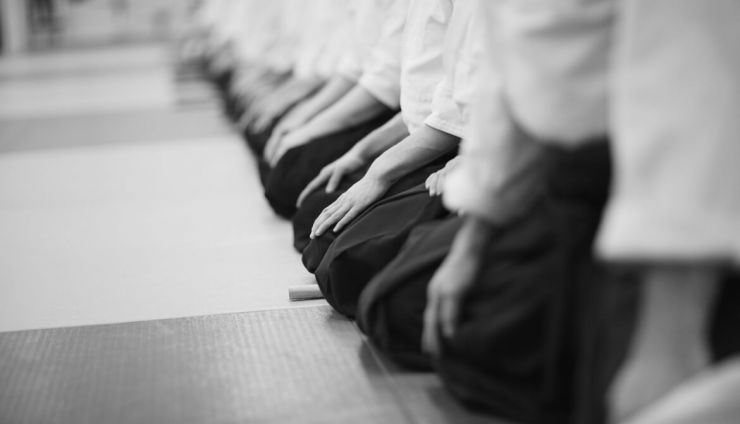
Silent Illumination
Just sitting….
settle the body….
settle the breath…
settle your feelings…
settle your thoughts…
settle your mind….
Still….
Silent…
Open...
Alert…
Inside and Outside merging as one….
Empty but Full……
One in All and All in One…
The qualities of Shoshin Mushin Fudoshin Heijoshin Mujushin and Zanshin.
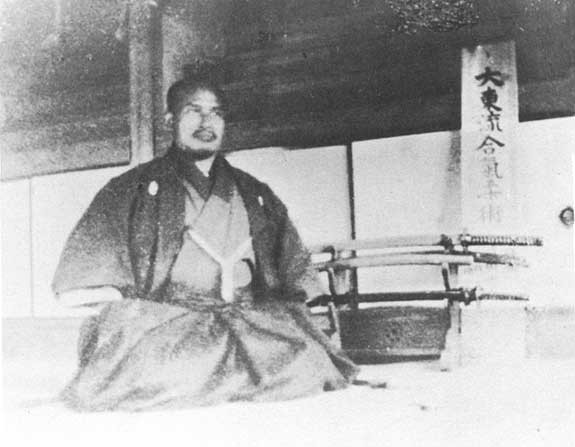
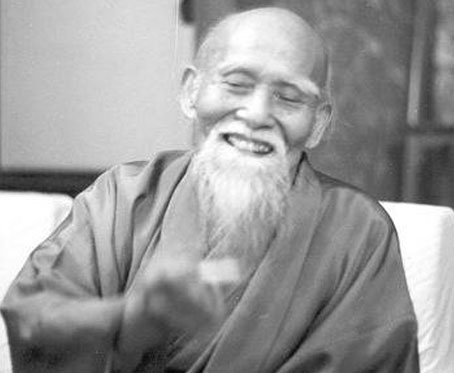
If you look at the pictures of O Sensei you will see in his demeanour and movement all of the Spirit of practice listed above.
Practice is Enlightenment…. Enlightenment is practice.
There will be another article following this with a detailed explanation of the breath and its relationship to the Mind and Body in Stillness and Movement.
